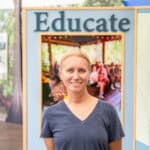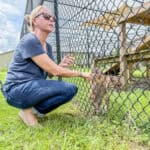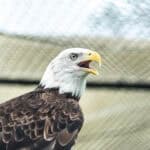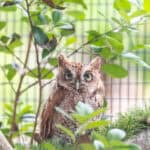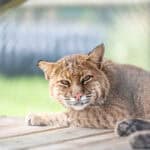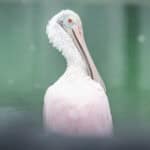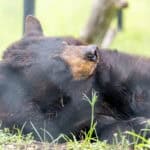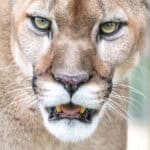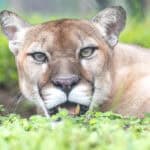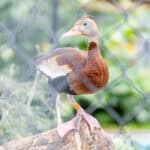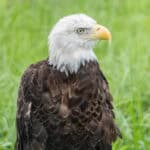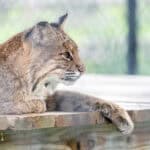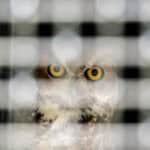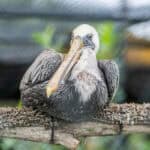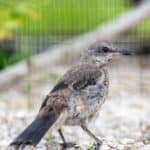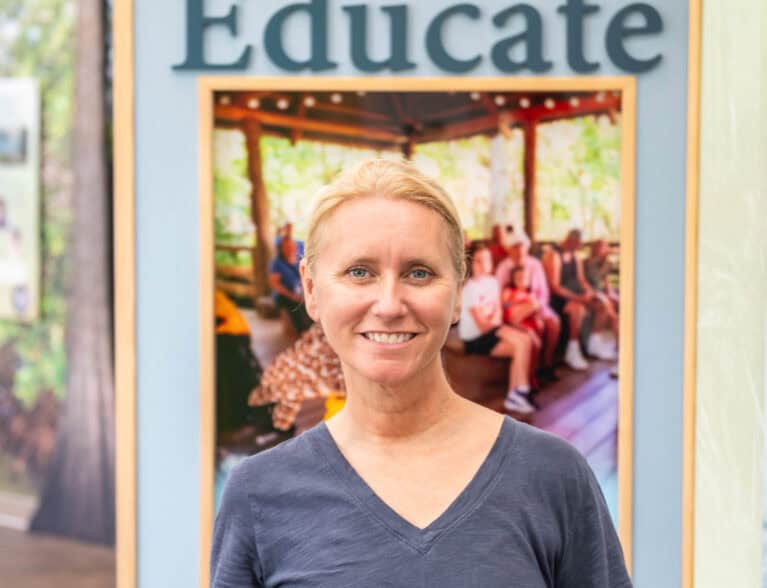
Rescue, rehabilitate, release and educate. More than a mission, it’s a way of life for the staff and volunteers at Busch Wildlife Sanctuary, another animal welfare organization with ties to Vero Beach.
Founded in 1983, the nonprofit became the Busch Wildlife Sanctuary in 1994 after receiving funding from the Peter W. Busch Family Foundation. Busch, who has had a home in Vero for some 40 years, continues to serve as board chairman; son David Busch is also a board member.
Animals and staff alike are settling in nicely to the 19.4-acre Jupiter Farms property they purchased in 2020; the move from a considerably smaller, leased property was completed in 2023.
CEO Amy Kight, who joined the organization in 2004, explained that the new campus utilizes about 5 acres for their state-of-the-art hospital and rehabilitation areas, which includes an avian flight reconditioning complex. Another 10 acres houses their permanent “ambassador” animals, those unable to survive in the wild.
Before going out on the trail, visitors enter a colorful and informative Discovery Center, with exhibits about their efforts to rescue and rehabilitate sick, injured or orphaned Florida wildlife.
A TV screen displays statistics on the number of animals they have cared for, including the 4,100 (183 species) to date this year. Kight pointed out that numbers spike during the spring baby season, when entire litters may need to be rescued.
“Let’s say an opossum gets hit by a car and she had a whole pouch full of babies. That’s not one, that can be 18. Same thing with ducklings. One day we got in 28 whistling ducks from one clutch because mom had been killed,” said Kight.
As much as possible, prior habitats were repurposed, such as one housing Uno, a little mockingbird who lost a wing to a cat.
“He’s actually one of our newest ambassadors out on the trail. He only moved out from rehab maybe a week or two ago. He’s a cutie pie,” said Kight. To weigh him, they put a worm on a scale and have trained him to hop on it.
Kight said that to prepare for the move, their team trained all the animals to willingly enter their kennels or to take hand injections for light sedation.
“We had five days to move over 300 animals, and we only had to use chemical capture on one,” said Kight, referencing the use of a dart on a skittish bobcat.
“All the birds were kennel-trained, so they walked right in. We shut the door, got here, opened the door, and let them back out in their new house,” said Kight. Even Freddy the alligator was trained to enter a long tube that could be closed up.
“It’s so different from the way things were 20 years ago. Now it’s all about free will and behavioral shaping and really forming a trusting relationship and a bond.”
Roughly half of their patients are avian; a wide variety from songbirds and waterbirds to various birds of prey. Injuries are primarily due to car strikes, along with fishing line entanglements, dog/cat attacks, window strikes and bullets.
“Each one has their own story. Wing and eye injuries being some of the more prevalent,” said Kight.
Some are congenital, such as with young Luna the owl, born with bilateral cataracts.
“She obviously couldn’t go back out in the wild, but she’s done really, really well adapting to life in captivity. It doesn’t seem to be causing her any sort of pain management issue, so we’re just monitoring.”
Of the two bald eagles in residence, one had a radical wing amputation after a car strike; a type of surgery she said was outlawed in the mid-’90s. The other broke his wing fledging the nest and, although they use therapy to help with pain management, he will never be strong enough to fish on his own.
They are, of course, very happy to release animals back into the wild, such as the juvenile swallowtails that were recently taken to a breeding colony and reunited with a flock.
A large, concrete block mammal building, designed like a four-leaf clover, is the night house for larger animals, such as bobcats, bears, panthers and otters, those most difficult to move in case of a storm. It also has hallways and a kitchen in the center.
“So in the event of a very, very bad storm, we not only bring these guys inside, but then we could also grab our kennels and bring in all the other species and house them inside the kitchen. And then we’d move in with them,” Kight explained.
Their two bobcat yards house two males and four females: Baston, Lucy and Clover in one, and Paisley, Porter and Penelope in the other. Kight said four of the bobcats were kept illegally as pets and the two others had birth disorders.
Baston, she said, was ‘found’ by people who kept him as a house pet and fed him cow’s milk, which doesn’t agree with cats.
“By the time they brought him to us, he was in pretty bad shape,” said Kight.
Charlie the cougar, declawed on all four feet, was rescued in California and transported cross country. “He’s got a happy place now.”
Florida black bear sisters Kiona and Tehya, now 17 years old, were born to a “nuisance” mother that had been relocated a couple of times.
“The third time, they saw the babies and they broke their own rule. Generally, the third time a bear gets in trouble is when they euthanize it. This time they actually relocated the whole family and in less than two weeks she had brought them back into a neighborhood and was teaching them all of her bad habits,” said Kight. When the mother was euthanized, they took the cubs, which were too young to survive on their own.
Pointing to the nocturnal animals sleeping in a windowed concrete building, Kight said with a laugh, “They’re one of the worst exhibits. It’s that fine balance between making it the best life we can give the animals, and then for the public to still be able to see them as much as possible. But they seem happy enough. They’re always relaxed.”
Freddy, an American alligator, resides in a fenced natural wetland divided into two sections.
“Back at the old place, first she lived in a concrete pool sort of thing and that really hurt my heart,” said Kight.
“One of my proudest accomplishments was having her go from that little concrete pond into about 2,000 square feet. She actually has 9,000 because she gets both sides. We rotate her back and forth. I just I love her to pieces.”
Freddy, Kight said, is fine sharing the space with turtles, ducks, birds and snakes, but not another alligator. And she definitely wasn’t interested in the 13-foot wild male that showed up and bellowed to her every morning during COVID.
They offer a weekly schedule of educational programs and occasional ticketed events. Open seven days a week, admission is free, but donations are most appreciated.
For more information, visit BuschWildlife.org.
Photos by Joshua Kodis

